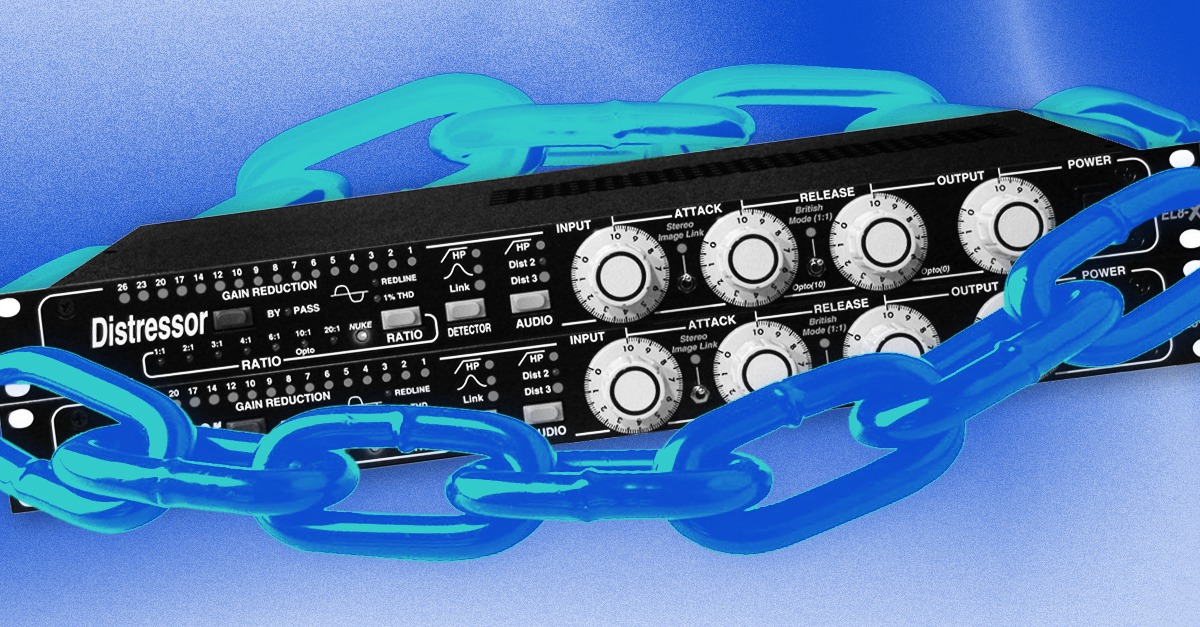
What is Phonk? How to Produce Its Memphis Rap-Inspired Sound

Phonk music took the internet by storm in 2023. In its 2023 Culture Report, Spotify recorded a 29% increase in phonk playlist streams over the year.
Look it up for yourself on YouTube and you’ll find countless playlists with millions of streams.
With all the hype around the new genre, many producers are curious about the history and music production techniques behind the sound of phonk music.
For good reason, it’s always a good idea to keep up with the latest trends in music production.
So let’s explore everything you need to know about phonk music, its subgenres, where it comes from and what goes into making it.
What is phonk?
You can’t talk about phonk without talking about its direct influences from late nineties Memphis rap groups like Three Six Mafia.
The legendary Memphis rap group pioneered its own brand of hip-hop production which made heavy use of lofi-sounding drums, crunchy 808 cow-bells and uniquely sinister lyrics.
Anyone who’s listened to Three Six Mafia will immediately recognize its influences on phonk, especially considering how much phonk’s producers sampled their rap vocals.
Phonk producers also leaned on the same blown-out TR-808 cowbell used in so much Memphis rap, instead opting to use it as a melody-driving synth tone.
The term phonk derives from the word “funk” and describes the additional soul, funk and jazz samples early phonk producers like Lil Ugly Mane, DJ Smokey and Mr. Sisco used over the chopped rap vocals.
As a rule, most phonk music makes use of samples with lofi treatment, whispy Memphis-inspired rap vocals, lots of 808 cowbell and heavy bass synths to fill out the arrangement.

Resident producers Sam and Anthony unpack the features of phonk in this live stream.
Phonk vs drift phonk
Drift phonk music is a genre of electronic music that was originally conceived to be the soundtrack to rally car drifting videos.
It draws heavily from the same influences as phonk, namely Memphis rap, but it up the intensity by adding a touch of house drum production and dubstep-inspired basslines.
Drift phonk is easily the most prominent of the many sub-variants of phonk music, but there are many smaller genres to which certain producers seem to categorize themselves.
Where and when did the drift phonk subgenre originate?
Given its heavy association with Russian drift video subculture, it’s no surprise that drift phonk music originated in the late 2010s on the Russian social media website, VK.
Russian producer Kaito Shoma’s 2018 track Scary Garry is widely considered to be one the original drift phonk track of the genre, combining Three Six Mafia samples with remixed bass and blown out TR-808 cowbell melodies.
Today though, most drift phonk tracks get their start on SoundCloud, with a handful of European producers like Kordhell, DVRST, DXRK, DJ Yung Vamp, Soudiere and Mythic being among phonk’s most prominent right now.
How to make phonk music in ten steps
With any new genre there’s always a rapid succession of sub-genres that form after it to introduce new ideas, influences and sounds.
In this section, we’ll look at the hallmark characteristics shared between all subgenres of phonk music.
You’ll need to experiment with these ideas if you want to produce music that takes inspiration from the genre.
Let’s take a look at how to make any phonk genre track in eight steps.
1. Get lofi drum sounds
Memphis trap uses a distinctly lo-fi drum sound, so it’s pretty common for phonk producers to blend thin and wispy sounds of its drums into their tunes.
The lofi sound of Memphis rap drums typically involves a crunchy and thin hi-hat, compressed kicks that sound somewhat flat and crunchy, thin-sounding snares.
Overall, the lofi drum aspect of phonk music won’t take up a ton of volume or space in the mix, instead, they offer a distinctly retro, lofi texture
Here's the sort of lofi drums you might find in a phonk track
2. Combine hip-hop and house drums
Phonk’s penchant for lofi doesn’t exclusively mean that its drums aren’t in your face or huge sounding.
The genre’s house and techno influences bring huge drums into the mix, especially in drift phonk.
Producers will often juxtapose heavy four-on-the-floor house kicks, claps and hats with low-key hip-hop drum programming.
So if you want to produce interesting phonk music, learn how to program both hip-hop and house drum patterns into your tracks.
Here's some house inspired drums I added to my phonk beat.
3. Use blown-out TR-808 cowbells as a synth stab
If there’s one sound that’s consistent across almost every phonk track it’s the TR-808 cowbell sound.
You’ll almost always hear a melody played through a heavily altered version of the orignal TR-808 cowbell.
Phonk producers like to sample the legendary drum machine’s cowbell sound and distort it with bit-crushing effects to make it super loud and punchy.
From there, the distorted, bit-crushed cowbell sound works well as a stabby synth sound that’ll punch a lead melody through any mix.
I grabbed this sweet cowbell sample and wrote a melody with Ableton's Simpler tool.
4. Add a thick Reese bass line
With its roots in 90s house and jungle music, Reese bass is a hallmark of so many electronic genres, so it’s not surprising to hear it show up in a lot of phonk tracks.
The powerful, whirring, deep drone of a Reese bass synth sounds great under the punch cowbell stabs and contributes to the ominous and sinister sound associated with phonk.
Many vintage synth plugins offer plenty of options for recreating Reese bass tone in your DAW—Digital Synsations from UVI or Analog Lab Lite from Arturia are great options to check out.
Here's a Reese bassline I added using a preset in Analog Lab Lite.
5. Trance-inspired pads and leads
Given it’s roots in eastern Europe, it’s not all that surprising that 90s style trance and eurodance synths are also commonplace in phonk tracks.
Whether it’s an arpeggiated lead or a buzzing pad in the background, don’t be shy to experiment with retro synths.
Again, plugins that recreate vintage gear in the DAW are a go-to for finding sounds like this—otherwise pad and lead samples are abundant on sample marketplaces.
Of course, just like the TR-808 cowbell sound, phonk producers aren’t afraid to use a lot of distortion and bit-crushing effects on their synth sounds to get an extra crunchy, lo-fi sound.
I added this heavenly sounding pad using DS1 preset in Digital Synsations.
6. Chopped-up telephone EQ’d vocals
Phonk music often will chop up a Memphis rap-style vocal and put EQ on it that makes it sound like it’s coming out of a phone.
This production technique is literally called phone EQ—it removes the same frequency bands that the telephone removes to make it easier to transfer the voice through fiber optics cables quickly.
Phone EQ usually places a high pass filter around 400Hz and a low pass filter around 4,000Hz to allow only the midrange frequencies of the human voice to pass through.
The only draw back is that this EQ style will often put your vocals pretty low in the mix, especially if you’re using huge kicks and synths—
If you want to put that whispery phone effect on your phonk vocals, try this simple production trick to create the telephone effect.
Here's a rap sample I found on LANDR Samples, with a bit of EQ and compression on it.
7. Use sidechain compression
Sidechain compression is a very common mix technique heard in many genres of electronic music. Phonk music certainly likes to make heavy use of it.
If you hear the volume of the mix momentarily reducing every time the kick hits, that’s because the mix is side-chained to a compressor that’s triggered by the kick drum.
This production trick is used to make kicks sound bigger by creating more space in for for them.
At its extreme, sidechaining can make your kicks sound very blown out—which is where phonk producers seem to be pushing their sidechain sound.
There’s a lot to learn about using sidechaining on your tracks, and we’ve written about it in past articles—but most DAWs can handle the technique easily.
Just be careful not to completely bury the rest of your mix behind your kicks.
I side chained this track grouping to my house kicks.
8. Be creative with your synth choices
I’ve listed some ideas about the kinds of synths you should consider trying in your phonk tracks, but given that the genre is so new there’s truly no rules about what synths do or don’t belong in phonk.
Listen to your favorite phonk playlist and you’ll find a ton of variety used in phonk productions.
Taking inspiration from modern EDM music you’ll hear wobbling dubstep synths and intense saw leads.
At the same time, you might hear a choir pad in the back playing an ominous chord, or you might hear a male voice synth humming a lead line.
In general, phonk music is mostly about creating an ominous, aggressive and even sinister vibe throughout the tune.
So pick out a synth that creates that feeling, stick to a minor key and play around with different lines and lo-fi chord progressions.
Here's the full beat!
Phonked up
Every time a new music genre makes its way into the world, it’s always interesting to look at where its influences come from and where its going.
In this case, phonk is a really interesting genre that blends aspects of old-school Memphis hip-hop, European electronic music and EDM.
Now that you know a little bit about the history and music production techniques used to produce this genre, get creative and make a track of your own!
Gear guides, tips, tutorials, inspiration and more—delivered weekly.
Keep up with the LANDR Blog.
